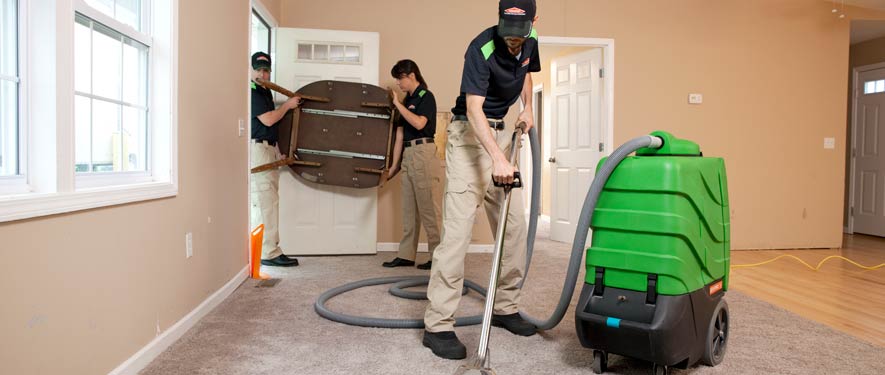
Step 3: Water Removal / Water Extraction
After the initial inspection and damage assessment step, the water extraction process begins when standing water or puddled water is present. This step removes the vast majority of the visible water present. (***Please do not forget about water inside the wall cavities, where after a sudden rupture of a water pipe, water typically spread to, seeping beyond the baseboards and settles in the dark wall cavity. We will address how we address that step following extraction) We will quickly get to work by using powerful pumps and truck-mounted vacuum units to quickly remove hundreds or thousands of gallons of water from your property. No need for you to go it alone, call our professional team out today!
Move-Out / Pack-Out
If your home requires extensive restoration or cleaning, SERVPRO of West Covina can conduct an organized, efficient move-out to protect your belongings from further damage.
- Move-Out Service
Emergency Water Removal
Our highly trained technicians will begin the water removal process almost immediately. Depending on the amount of water, we may use powerful submersible pumps in addition to industrial strength, wet/dry vacuums. Removing most of the water helps reduce drying time and helps prevent secondary water damage and mold and bacterial growth.
- Remove Excess Water
- Use Submersible Pumps and Industrial Wet/Dry Vacuums
Inspect the Carpet Pad and Carpet
We inspect the carpet and pad and determine if they should be removed to protect the subfloor.
- Inspect Carpet Pad and Remove If Needed
- Inspect Carpet and Remove If Needed
Water Removal Equipment
- Moisture detectors, hygrometers, and other meters measure the extent of moisture saturation.
- Infrared cameras may be used to find “hidden” water behind walls and ceilings.
- Submersible and gas-powered pumps are used for continuous pumping of high-level water.
- Truck-mounted and portable extraction units perform efficient water removal.






 24/7 Emergency Service
24/7 Emergency Service


